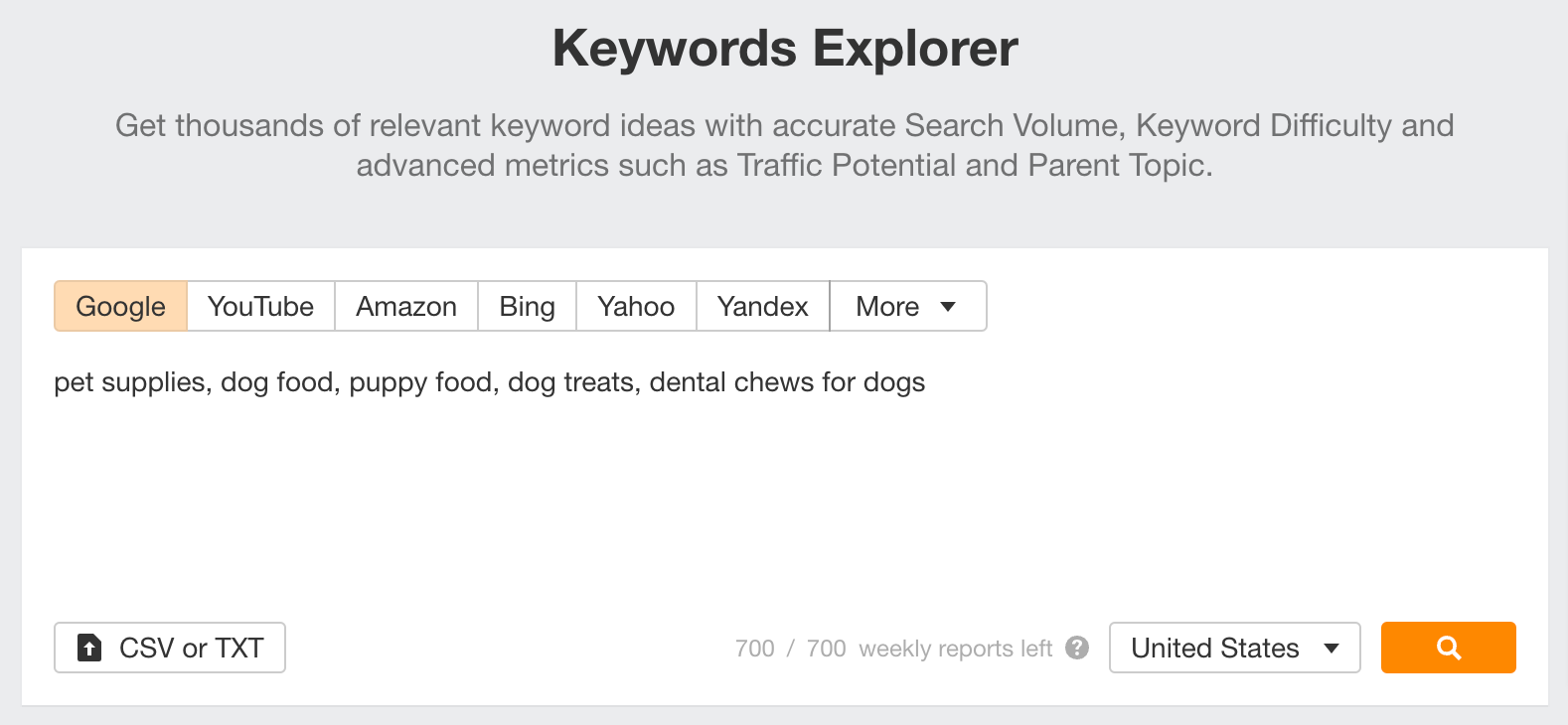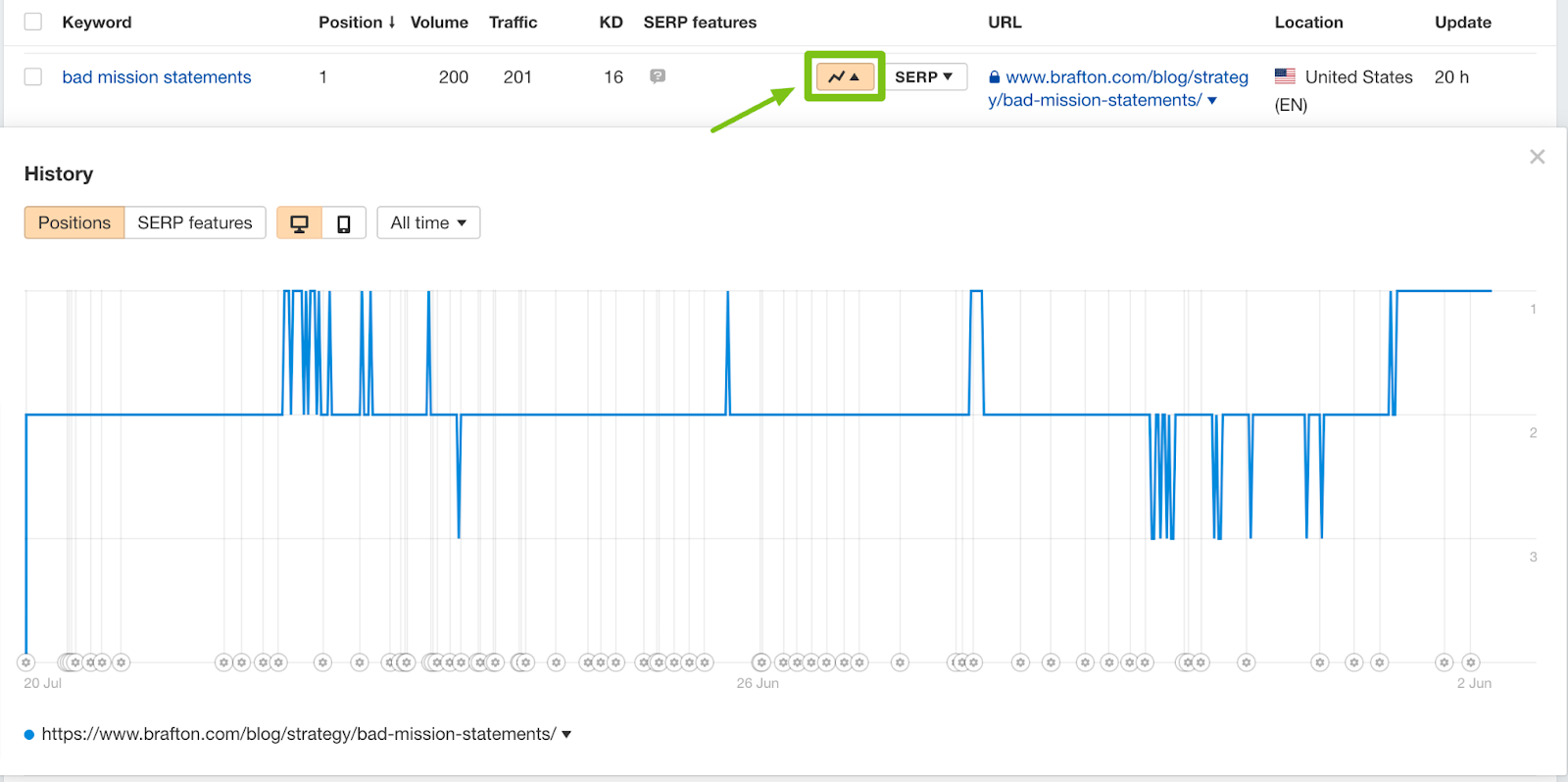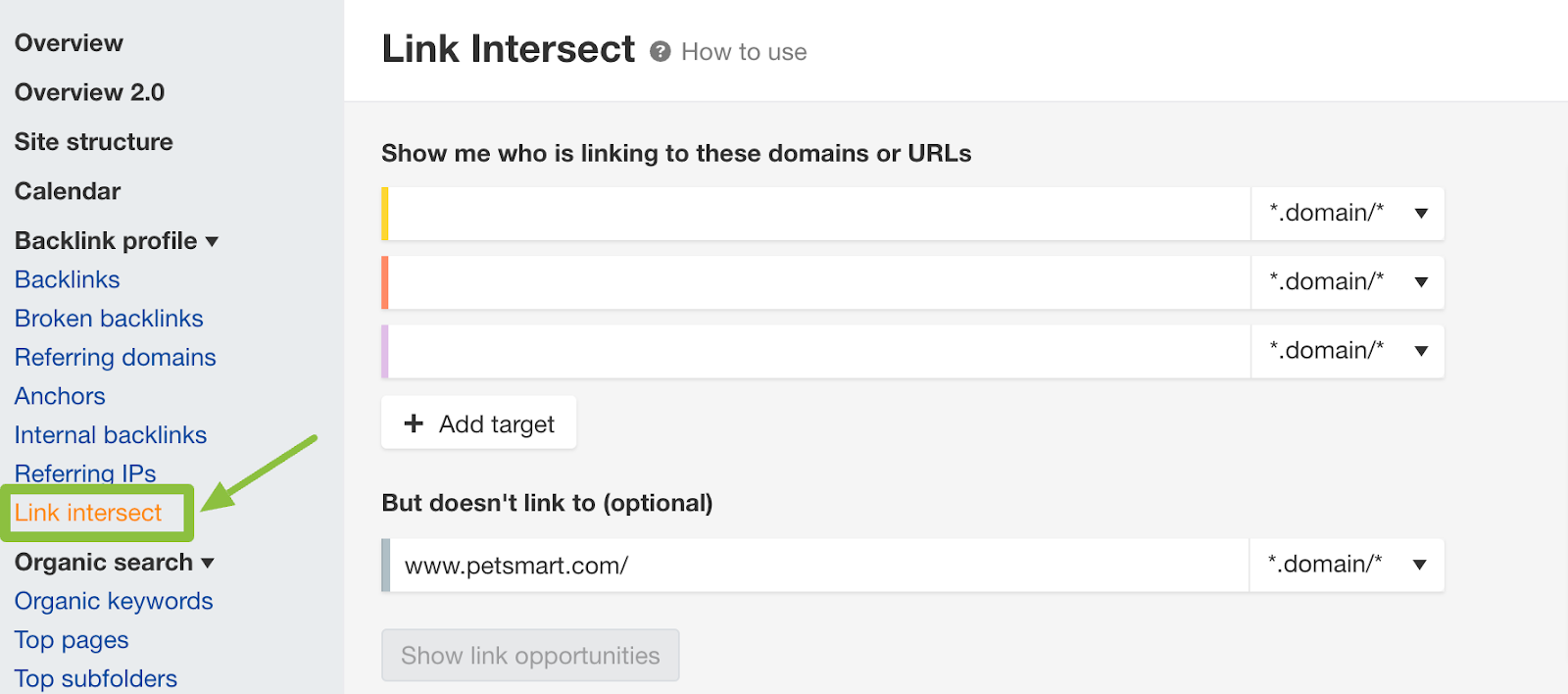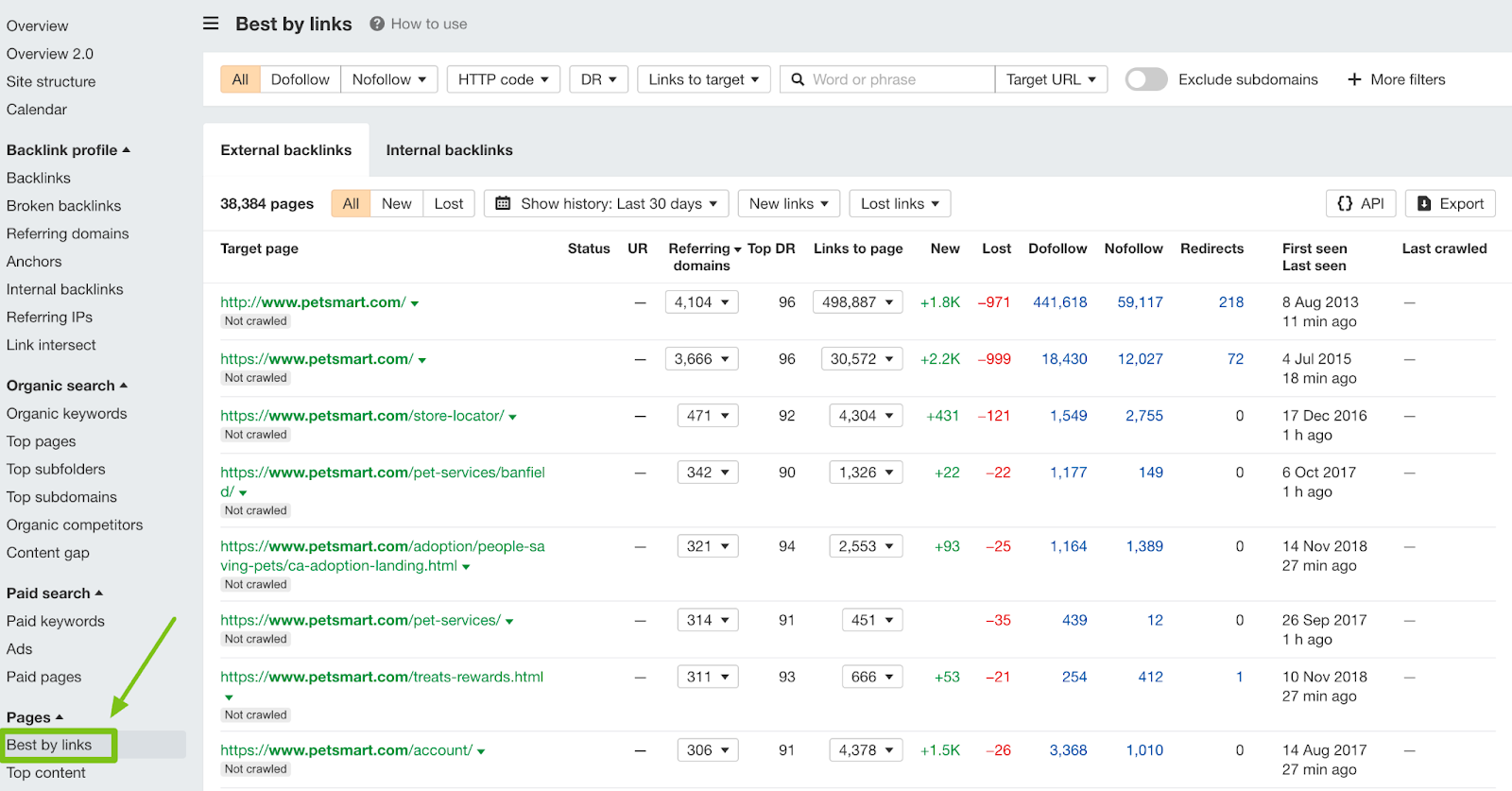In today’s fast-paced content marketing landscape, it’s crucial to make informed decisions based on concrete data rather than gut feelings.
Tracking competitors’ SEO metrics such as page ranks and backlink profiles has become a key strategy. However, marketing directors already have to keep up with a deluge of data, evolving trends and emerging technologies.
Enter Ahrefs – the solution of choice for countless content marketers seeking to conquer this herculean task and establish measurable KPIs for their keyword research.
Join us as we explore Ahrefs’ content and site explorer to uncover how they can bolster your future keyword ideas!
How Your Content Marketing Can Benefit From Ahrefs
Imagine shooting an apple from a tree with a bow and arrow while blindfolded, uncertain of how many apples remain or if any have already been picked.
SEO tools like Ahrefs give you that competitive edge by providing insights into keyword difficulty, search volume and domain ratings. Instead of blindly shooting for keywords you believe to be important, you can eliminate your personal bias through SEO metrics and see what your present and future clients are looking for.
You might find that a content gap is smaller than expected or that you need to improve your own domain rating before targeting a specific keyword. And even if you conquer that longed-for spot in the featured snippet, you’ll realize that search volume doesn’t equal clicks. Ahrefs can estimate your clicks per search to help set realistic goals.
If Ahrefs’ SEO ranking reports make you see the apples, a myriad of content creation tools will give you the arrows in your marketing quiver. Combining tools lets you play to their strengths. Ahrefs’ keyword difficulty score and traffic estimates can tell you about your market size, audience interests and the content types they expect.
Subscribe to
The Content Marketer
Get weekly insights, advice and opinions about all things digital marketing.
Thank you for subscribing to The Content Marketer!
How To Perform Keyword Research With Ahrefs
Keyword research seems straightforward: Find the right keywords and put them in your content.
But with more SEO metrics available, we can make better decisions on whether to include a specific keyword or avoid it.
When you’re just starting out, you’ll often deal with seed keywords — broad terms that you’ll use to gather ideas. You can get these from your product names, your competitors’ websites or just a list of ideas about the types of topics you’d like to address through your blog or website.

Once you have those, Ahrefs provides several helpful routes to explore:
- Overview: See the metrics for the specific terms you entered.
- Matching terms: New keywords generated using the terms you entered. Eg: pet supplies near me, best dog food.
- Related terms: New keywords based on similar terms to the ones you entered. Eg: pet store near me, Petsmart.
- Search suggestions: New keywords based on autocomplete suggestions for the terms you entered. Eg: dog food recipes, dog food container.
Once you’ve dug a bit deeper, you can compare metrics like monthly search volume, keyword difficulty, clicks per search and SERP features to determine which terms to target.
Beyond content planning, keyword research tools can inform your marketing efforts in other areas, including:
- Recognizing high-value keywords you’re already ranking for with existing pages.
- Researching keyword difficulty and SERP crowding to estimate your ranking potential.
- Evaluating customer intent to inform your search engine optimization.
- Estimating search volume and potential cost for content production or Google Ads.
- Researching competitors’ websites to uncover valuable terms to target.
We’ve covered our own keyword research strategy and tools in more detail to help you understand how we perform keyword research for our content.
Free keyword tools such as Google Trends or Google Search Console certainly have their place, but they only get you so far. If you’re spending money on content production or Google Ads, a decent keyword research tool will help you measure your URL ratings along the way.
Uncover the Strategies Your Competitors Use With Site Explorer
Marketing inspiration can come from anywhere — and sometimes, it comes from the successes of your competition. Understanding what works for them helps you draw on their success to inform your strategy.
Ahrefs makes this possible in several ways.
First, you can use the Ahrefs Site Explorer to research your competitors’ referring domains and content.
At a glance, you can see their backlink profile, organic search success and even how they’re handling paid search:

From there, you can find opportunities you want to claim for your own brand. Here’s how:
- Keyword opps: See what they’re ranking for that you’re not, and create a better page for it.
- Backlink opps: See who’s linking to them, and try to connect with that organization.
- PPC opps: See which key terms they’re putting spend behind; there might be a valuable reason for it.
Once you’ve done your site audit and chosen your target keywords, you want to regularly check in on your strategic goals. After all, what good is a finish line if you don’t know if you’re getting any closer? Ahrefs’ Rank Tracker gives you a tangible metric to make sure you’re improving.
Here, you’ll create unique projects for each group of keywords you want to track. For example, we have projects for the Brafton blog, local SEO pages, main services pages and more. Within each project, enter your target terms. Ahrefs will spin its magic, and show you:
- Your site’s ranking position for that term.
- The URL from your site that’s being displayed in the SERP.
- Metrics like search volume, difficulty and SERP features.
- Your estimated traffic from that term.
The best part of this report is this little jagged line, which opens up a line graph of your ranking over time:

This is the perfect page to begin evaluating key landing page performance.
Measure Your Domain’s Strength With Backlink Analysis
You also need to know who’s cheering for your competitors, meaning what their backlink profile looks like compared to yours.
Ahrefs Site Explorer lets you check out your own or a competitor’s backlinks by pasting in a URL — be it to a single blog post or an entire domain. Mind you, not every referring domain helps you rise in the search results; low-quality domains could have a negative impact on your site’s health. Luckily, Ahrefs displays metrics about each backlink pointing to your site so you can easily see the highest quality among them — and the lowest. Ahrefs will also show you problems such as broken links that could hurt your ranking.
Ahrefs provides several reports to help you do backlink analysis. Here are our favorite 3:
1. Backlink Profile: Backlinks

This lists every page that links to your site, including metrics like Domain Rating (An Ahrefs proprietary metric similar to Domain Authority; this hints at the quality of the link), traffic, anchor text, target URL and date first seen. Use this report to find the highest-value backlinks in your portfolio or your most common referring domains.
2. Backlink Profile: Link Intersect

Here, you can enter several of your competitors in addition to your own site to see who’s linking to them but not you. Use this to find new link building outreach opportunities.
3. Pages: Best by Links

This shows you a list of your own pages, sorted by which has the most backlinks pointing to it. Use this to learn which of your pages have generated the most organic backlinks, your backlink-to-referring-domain ratio, whether your backlinks are do-follow or no-follow and more.
You may find new industry publications or new social media platforms on which your target audience is most active, in which case it helps to supplement your SEO tools with social media marketing tools.
Site Audits: A Structured View on Your Website Content
Before you panic because we mentioned an audit — don’t worry; nobody will ask for your returns. This will actually benefit your business, so you should make it an integral part of your content marketing strategy.
In a site audit, you identify technical SEO issues that might hurt your website’s chances of showing up in search results. Ahrefs’ cloud-based audit will also evaluate content quality and localization. While it can’t judge your puns, it can detect sites with low word counts or unconsolidated duplicate pages as well as issues with your Hreflang tag.
You can conduct a one-off site audit, but the value of this Ahrefs report really comes from the ability to carry out ongoing site crawls in the background. Set the frequency of the crawl, and you can periodically check in on your report to observe how your site has improved over time.
So, what specifically does the Site Audit tell you? Tons and tons of details, grouped into content types:
- Internal pages.
- Indexable and non-indexable pages.
- Links.
- Redirects.
- Sitemaps.
- Images.
- Javascript.
- And more.
For each type of issue, Ahrefs flags Notices (low severity) Warnings (rising severity) and Errors (high severity). Click into each individual report to see which pages are impacted by the problem.
Technical SEO is tedious business, but it’s critical to maintaining a healthy website that ranks for target terms, earns organic backlinks and, of course, attracts qualified leads. Ahrefs helps you dive into this task by breaking down barriers and giving you a clear starting point.
Ahrefs vs. Google Search Console — What’s the Difference Between These Tools?
While both Google Search Console and Ahrefs provide significant amounts of keyword research data, Ahrefs’ content and keyword explorer offer deeper insights into the meaning behind the data.
Google Search Console can identify indexing issues and ranking keywords, but Ahrefs comes with more advanced filters and additional data sets. In fact, Ahrefs themselves reported that almost half of the keywords delivering traffic to your site aren’t accounted for in GSC’s reporting.
Now, does that mean Ahrefs is just better? — No, it means that Ahrefs gives you a different view of the data, complementing what it doesn’t know with other data sets. Each tool takes a different approach.
To find the SEO tool that rules them all is impossible, even if we’d love to tell you otherwise. However, combining some tools will get you closer to a full image of the data behind them.
While our definition of good content keeps evolving, search engines like Google only establish new rules to guarantee good user experience. The more data you have and learn to read over time, the better you can evaluate trends and future-proof your business.





